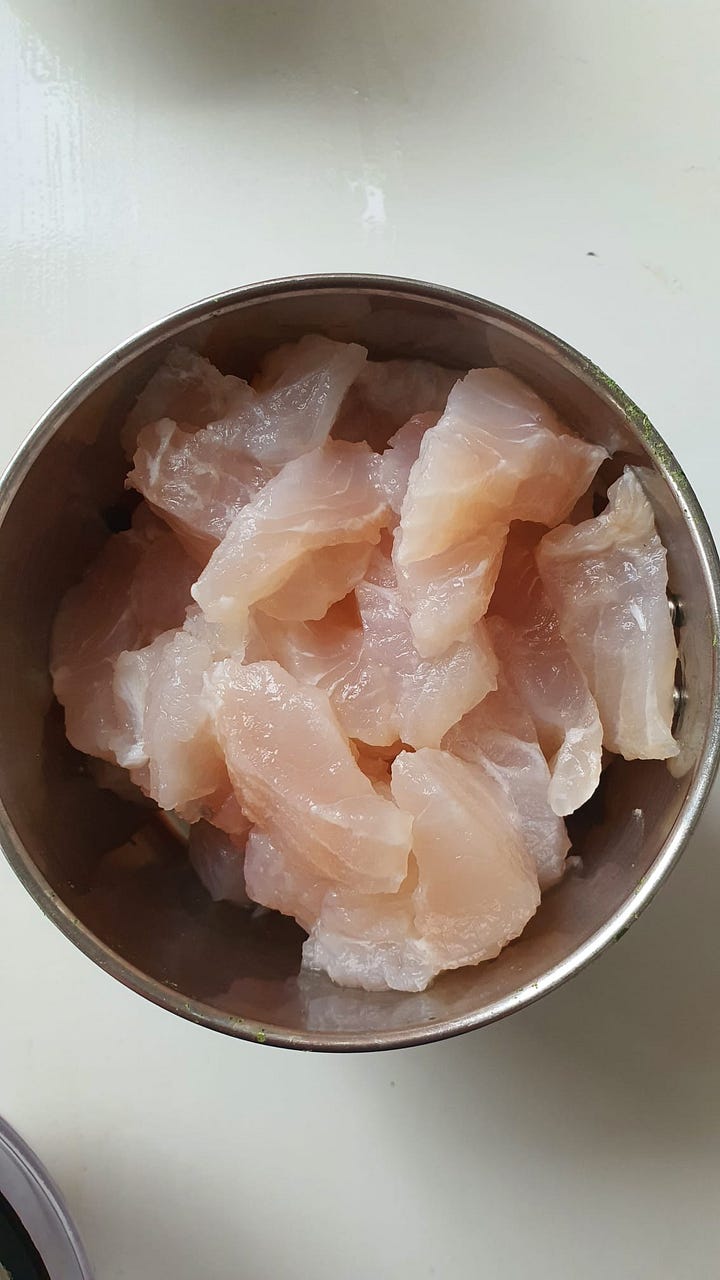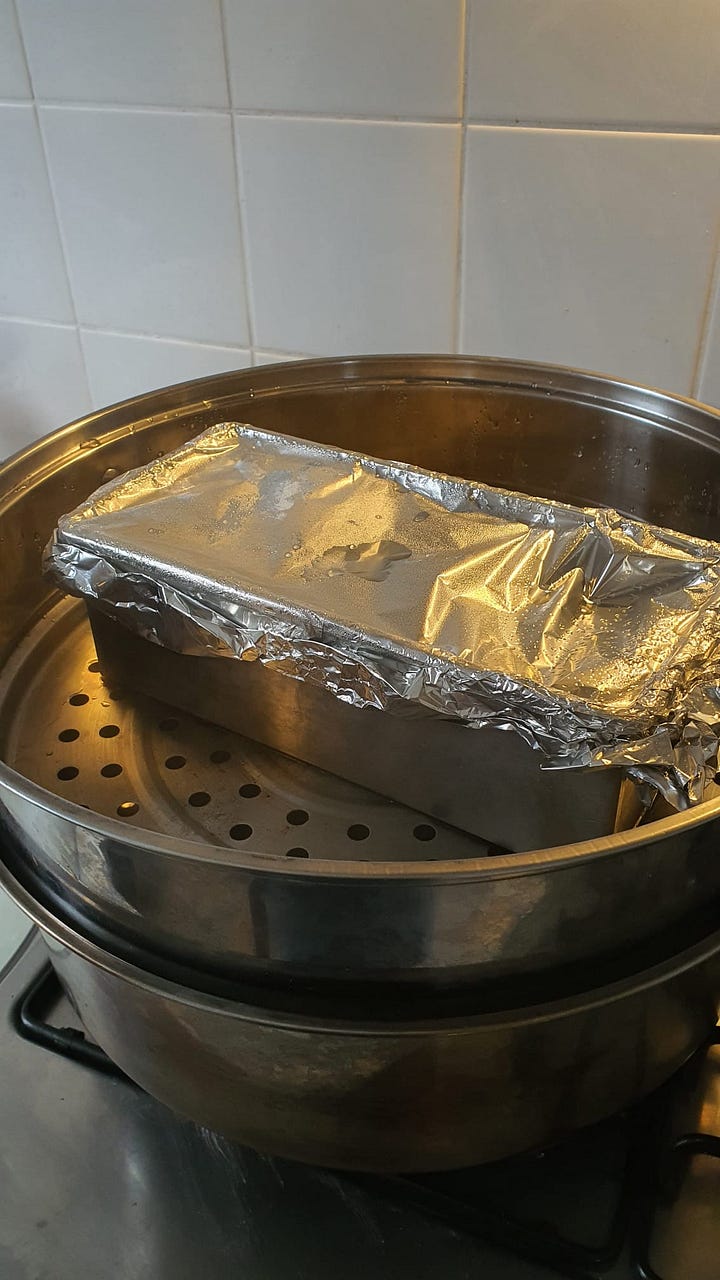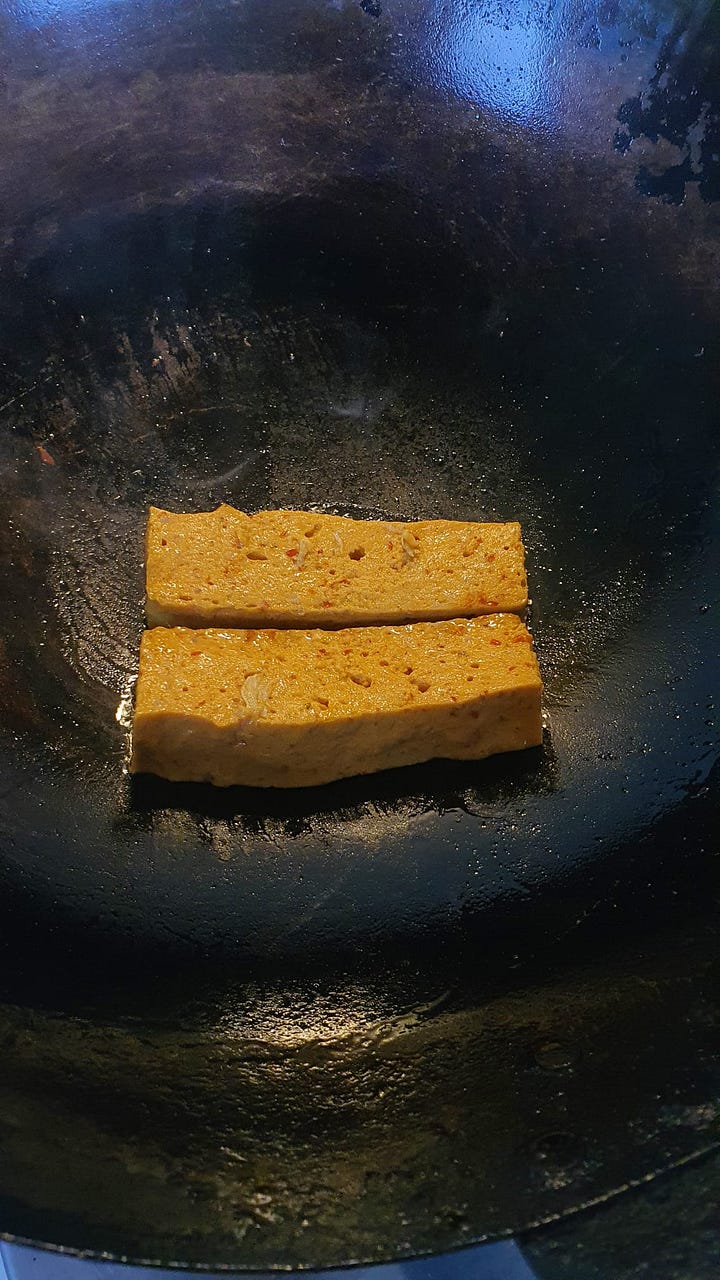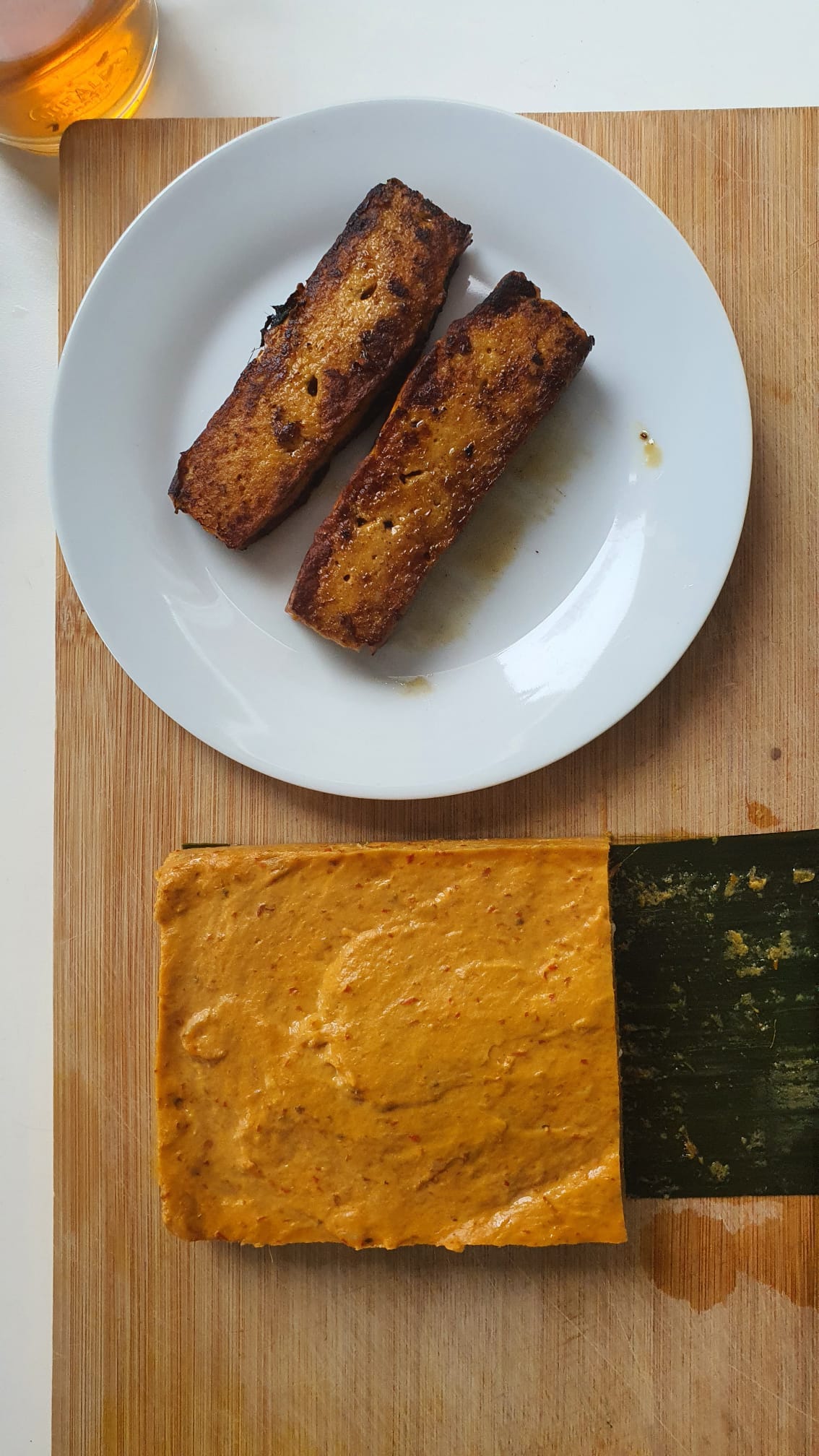Our fridge is regularly stocked with what Wex considers “breakfast food”, which is usually some sliced ham or cured sausage for sandwiches. Even though I’m not big on supermarket processed meat, even I can’t deny the convenience of having these on hand. A great alternative that we’ve been enjoying is homemade otah. The right word for this spiced fish custard is really otak, but in Singapore, so many names of food dishes are technically incorrect but their new names have stuck nevertheless (the correct English translation for lei cha fan 擂茶饭 is “ground tea rice” and not “thunder tea rice”, for instance).
Otak means “brain” in the Malay language, and if you are only acquainted with the version that is wrapped in slim parcels at hawker centres, the association might not be immediately obvious. Smeared thinly onto coconut leaves and charred on the grill, the fish paste comes in two variants: white, which resembles dense and springy fishcakes when cooked; and red, which is intensely spiced with aromatics such as chilli and lemongrass. At home, otah was always in the form of a thick red slab drawn from the freezer and reheated as a snack. Its texture was soft, custardy, and indeed very brain-like. Because of this, you’ll have no issue smearing it onto bread like kaya or pate, with slices of cucumber in the sandwich to provide cooling relief.
A long time ago, someone asked if I would develop an otah recipe because recipes online were not producing good results for her. It is true - the texture of otah is rather tricky to nail, especially if you are keen in making large, steamed slabs (most recipes online are for individually wrapped otah). I went through several trials last week, before I arrived at this version that I’m very happy with.
Any white fish can be used to make otah - I chose pangasius fillets, which are very affordable and available at the supermarket or freezer section of any Asian grocer. While they are terribly soft and tofu-like when steamed, this quality is in fact what makes them great for otah. Once ground into a paste, the fish is added to the rempah. I simply used my multipurpose rempah, which I’ve been making and dipping into the whole of 2024 so far (I’m on my second batch now!)


To tame the heat of the rempah and add richness, coconut cream is added. While some recipes call for coconut milk, I prefer coconut cream because this type of fish inherently contains a lot of moisture. To season the fish, you really don’t require much because the rempah has so much flavour - I use a little fish sauce, salt, and sugar.
Almost all otah recipes use some form of starch to set the custard. After making otah with rice flour and tapioca starch, my preference is for the latter; rice flour can produce a mushy texture in the custard.


Rather than wrapping the fish paste in individual leaf parcels, I steam the otah in a loaf pan lined with banana leaf - the custard is cooked within 15 minutes:


The texture of this otah is so tender, it is almost like eating a firm, steamed egg custard. It pairs well with rice, porridge, and bread, and any leftovers keep well in the fridge for a couple of days. To refresh, steam the otah or pan-fry thick slices until a crust forms on all sides:


Other than making and eating otah, Wex and I spent the weekend calling home and exchanging Lunar New Year wishes - our mothers both have six siblings each, so our families are large. It wasn’t until we learnt that Wex’s mom was serving otah in steamed lotus buns this year to her guests that our otah-eating felt appropriately festive. If you are still looking for suggestions on what to cook this Lunar New Year, here are some suggestions:
Pineapple tarts (vegetarian)
Popiah (vegetarian option)
Glutinous rice balls with black sesame filling (vegetarian)
Achar (vegan)
Chap chye (vegan)
Pandan nian gao (vegan), p. 254-255 of Plantasia
Happy Lunar New Year to all celebrating! 🧡🧡
Otah
MAKES A 9-BY-4-INCH (23-BY-10-CM) SLAB




